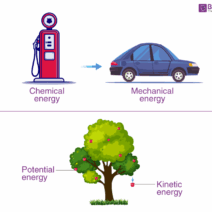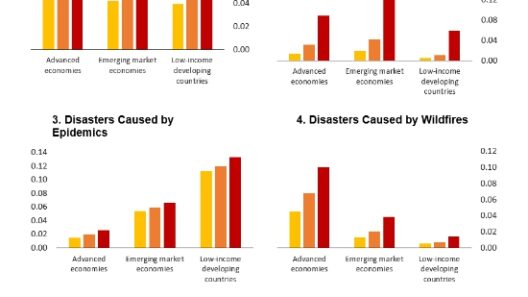The Paris Climate Agreement, forged in the crucible of international diplomacy, stands as a watershed moment in the battle against climate change. To the uninitiated, it may evoke a sense of nebulousness; a complex tapestry woven with aspirations, obligations, and the ever-pressing need for sustainability. However, beneath this intricate facade lies a fundamentally pragmatic endeavor aimed at global cooperation to avert the dire consequences of climate disruption.
The genesis of the Paris Agreement dates back to the 2015 United Nations Framework Convention on Climate Change (UNFCCC) conference held in Paris, which brought together nations from across the globe under a singular umbrella of environmental diligence. The enthusiasm surrounding the agreement is palpable; it symbolizes a moment when countries recognized that climate change is a collective predicament, transcending borders and national interests. The deductions made during the symposium underline an essential tenet: individual actions are insufficient in the face of global challenges.
One of the agreement’s most noteworthy components is its long-term temperature goal. The collective ambition is to limit the increase in global average temperature to well below 2 degrees Celsius above pre-industrial levels, while pursuing efforts to cap the rise at 1.5 degrees Celsius. This is not mere rhetoric; the implications of these targets are profound. Climate scientists assert that exceeding the 1.5-degree threshold could unleash catastrophic weather patterns, exacerbating droughts, floods, and heatwaves, further destabilizing ecosystems and human societies.
To attain these lofty objectives, the Paris Agreement adopts a bottom-up approach through Nationally Determined Contributions (NDCs). Member states are tasked with developing their own climate action plans, tailored to their specific circumstances. This model allows for a diverse array of commitments ranging from ambitious carbon-neutral aspirations to more incremental reductions in greenhouse gas emissions. Such flexibility encourages participation, as nations can align their climate ambitions with economic realities while simultaneously contributing to a collective ethos of environmental stewardship.
Critics often point to the voluntary nature of the NDCs as a potential flaw; a veritable ‘soft law’ that lacks enforcement mechanisms. Therein lies the dual nature of the agreement—while optimism thrives regarding global solidarity, skepticism looms regarding accountability. The effectiveness and stringency of the agreement hinge on national political will, which may waver in response to electoral cycles, economic pressures, or changing public sentiment. This phenomenon illustrates a common observation: the intersection of climate policy and domestic politics is often riddled with friction.
Furthermore, the Paris Agreement espouses the concept of climate finance, a pivotal element in catalyzing global actions. Wealthier nations have pledged to provide $100 billion annually by 2020 to assist developing countries in their transition to sustainable practices. This financial mechanism is vital, as those nations often bear the brunt of climate impacts despite contributing the least to historical greenhouse gas emissions. The undercurrents of climate justice are integral to the narrative of the Paris Agreement. It’s a recognition that equity and fairness must permeate climate discussions, reflecting the disparate capacities of nations.
While the agreement provides a robust framework, it also faces substantial challenges. The omnipresent specter of climate denial and disinformation campaigns threatens to undermine the collective endeavor. This reality demands an informed and engaged citizenry, as public awareness and advocacy can catalyze meaningful political action. In an age dominated by social media, grassroots movements have the potential to galvanize a public desire for climate action, thus holding governments accountable.
Additionally, a burgeoning fascination surrounds the nexus between technological innovation and climate change mitigation. The Paris Agreement serves as a crucible for advancements in renewable energy, carbon capture technologies, and sustainable agricultural practices. Nations are incentivized to invest in research and development that could be a game-changer for their economies and the planet. Innovative solutions, such as advanced battery storage and carbon-neutral fuels, are not merely complementary; they are critical in realizing the aspirational goals of the agreement.
Engagement on multiple levels—international, national, and local—underscores the multifaceted nature of climate action. Local governments often serve as testing grounds for innovative policies and initiatives, proving that substantive change can manifest at smaller scales before scaling up. Moreover, grassroots initiatives and community-driven projects can supplement national efforts by embodying principles of resilience and sustainability on the ground.
As the world collectively ventures toward the next milestones set forth by the Paris Agreement, an awareness of climate change as both an existential threat and an opportunity for transformative change remains crucial. With the tension between progress and stagnation omnipresent, public discourse must navigate the choppy waters of climate action with both urgency and rationality.
In conclusion, the Paris Climate Agreement is far more than a mere document; it is a clarion call for concerted action against a mutual adversary. At its core lies a recognition that humanity’s relationship with the planet must be recalibrated. As the dialogues surrounding climate continue to evolve, the ability to distill complex policies into actionable commitments will determine the effectiveness of our collective response. The road ahead may be fraught with challenges, yet the potential for revolutionary change resides in our willingness to embody the principles of cooperation, equity, and innovation.



